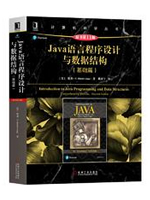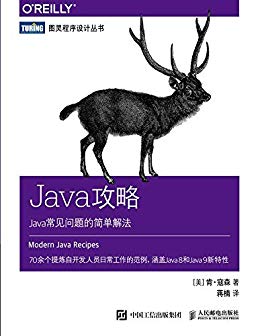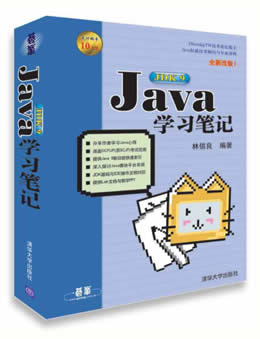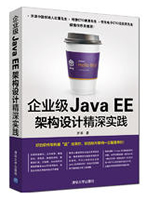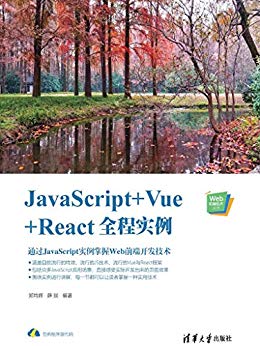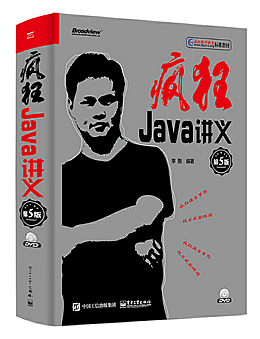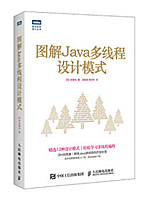我们帮大家精选了相关的编程文章,网友温奇颖根据主题投稿了本篇教程内容,涉及到java、腾讯、ocr、图片识别、接口调用、java腾讯ocr图片识别接口调用相关内容,已被669网友关注,涉猎到的知识点内容可以在下方电子书获得。
java腾讯ocr图片识别接口调用
最近开发了一个拍车牌识别车牌号的功能,主要调用了腾讯的ocr车牌识别接口,直接上代码:
首先生成签名以及读取配置的工具类:
package com.weaver.formmodel.integration.ocr;
import java.util.Random;
import javax.crypto.Mac;
import javax.crypto.spec.SecretKeySpec;
import weaver.general.Base64;
public class SignUtil {
/**
* 生成 Authorization 签名字段
*
* @param appId
* @param secretId
* @param secretKey
* @param bucketName
* @param expired
* @return 签名字符串
* @throws Exception
*/
public static String appSign(long appId, String secretId, String secretKey,
String bucketName, long expired) throws Exception {
long now = System.currentTimeMillis() / 1000;
int rdm = Math.abs(new Random().nextInt());
String plainText = String.format("a=%d&b=%s&k=%s&t=%d&e=%d&r=%d",
appId, bucketName, secretId, now, now + expired, rdm);
byte[] hmacDigest = HmacSha1(plainText, secretKey);
byte[] signContent = new byte[hmacDigest.length
+ plainText.getBytes().length];
System.arraycopy(hmacDigest, 0, signContent, 0, hmacDigest.length);
System.arraycopy(plainText.getBytes(), 0, signContent,
hmacDigest.length, plainText.getBytes().length);
return Base64Encode(signContent);
}
/**
* 生成 base64 编码
*
* @param binaryData
* @return
*/
public static String Base64Encode(byte[] binaryData) {
String encodedstr = new String(Base64.encode(binaryData));
return encodedstr;
}
/**
* 生成 hmacsha1 签名
*
* @param binaryData
* @param key
* @return
* @throws Exception
*/
public static byte[] HmacSha1(byte[] binaryData, String key)
throws Exception {
Mac mac = Mac.getInstance("HmacSHA1");
SecretKeySpec secretKey = new SecretKeySpec(key.getBytes(), "HmacSHA1");
mac.init(secretKey);
byte[] HmacSha1Digest = mac.doFinal(binaryData);
return HmacSha1Digest;
}
/**
* 生成 hmacsha1 签名
*
* @param plainText
* @param key
* @return
* @throws Exception
*/
public static byte[] HmacSha1(String plainText, String key)
throws Exception {
return HmacSha1(plainText.getBytes(), key);
}
}
package weaver.general;
import java.io.BufferedInputStream;
import java.io.BufferedOutputStream;
import java.io.BufferedReader;
import java.io.BufferedWriter;
import java.io.ByteArrayOutputStream;
import java.io.CharArrayWriter;
import java.io.File;
import java.io.FileInputStream;
import java.io.FileOutputStream;
import java.io.FileReader;
import java.io.FileWriter;
import java.io.InputStream;
import java.io.OutputStream;
import java.io.Reader;
import java.io.Writer;
/**
* Provides encoding of raw bytes to base64-encoded characters, and decoding of
* base64 characters to raw bytes. date: 06 August 1998 modified: 14 February
* 2000 modified: 22 September 2000
*
* @author Kevin Kelley (kelley@ruralnet.net)
* @version 1.3
*/
public class Base64 {
/**
* returns an array of base64-encoded characters to represent the passed
* data array.
*
* @param data
* the array of bytes to encode
* @return base64-coded character array.
*/
public static char[] encode(byte[] data) {
char[] out = new char[((data.length + 2) / 3) * 4];
//
// 3 bytes encode to 4 chars. Output is always an even
// multiple of 4 characters.
//
for (int i = 0, index = 0; i < data.length; i += 3, index += 4) {
boolean quad = false;
boolean trip = false;
int val = (0xFF & data[i]);
val <<= 8;
if ((i + 1) < data.length) {
val |= (0xFF & data[i + 1]);
trip = true;
}
val <<= 8;
if ((i + 2) < data.length) {
val |= (0xFF & data[i + 2]);
quad = true;
}
out[index + 3] = alphabet[(quad ? (val & 0x3F) : 64)];
val >>= 6;
out[index + 2] = alphabet[(trip ? (val & 0x3F) : 64)];
val >>= 6;
out[index + 1] = alphabet[val & 0x3F];
val >>= 6;
out[index + 0] = alphabet[val & 0x3F];
}
return out;
}
/**
* Decodes a BASE-64 encoded stream to recover the original data. White
* space before and after will be trimmed away, but no other manipulation of
* the input will be performed.
*
* As of version 1.2 this method will properly handle input containing junk
* characters (newlines and the like) rather than throwing an error. It does
* this by pre-parsing the input and generating from that a count of VALID
* input characters.
**/
public static byte[] decode(char[] data) {
// as our input could contain non-BASE64 data (newlines,
// whitespace of any sort, whatever) we must first adjust
// our count of USABLE data so that...
// (a) we don't misallocate the output array, and
// (b) think that we miscalculated our data length
// just because of extraneous throw-away junk
int tempLen = data.length;
for (int ix = 0; ix < data.length; ix++) {
if ((data[ix] > 255) || codes[data[ix]] < 0)
--tempLen; // ignore non-valid chars and padding
}
// calculate required length:
// -- 3 bytes for every 4 valid base64 chars
// -- plus 2 bytes if there are 3 extra base64 chars,
// or plus 1 byte if there are 2 extra.
int len = (tempLen / 4) * 3;
if ((tempLen % 4) == 3)
len += 2;
if ((tempLen % 4) == 2)
len += 1;
byte[] out = new byte[len];
int shift = 0; // # of excess bits stored in accum
int accum = 0; // excess bits
int index = 0;
// we now go through the entire array (NOT using the 'tempLen' value)
for (int ix = 0; ix < data.length; ix++) {
int value = (data[ix] > 255) ? -1 : codes[data[ix]];
if (value >= 0)// skip over non-code
{
accum <<= 6; // bits shift up by 6 each time thru
shift += 6; // loop, with new bits being put in
accum |= value; // at the bottom.
if (shift >= 8)// whenever there are 8 or more shifted in,
{
shift -= 8; // write them out (from the top, leaving any
out[index++] = // excess at the bottom for next iteration.
(byte) ((accum >> shift) & 0xff);
}
}
// we will also have skipped processing a padding null byte ('=')
// here;
// these are used ONLY for padding to an even length and do not
// legally
// occur as encoded data. for this reason we can ignore the fact
// that
// no index++ operation occurs in that special case: the out[] array
// is
// initialized to all-zero bytes to start with and that works to our
// advantage in this combination.
}
// if there is STILL something wrong we just have to throw up now!
if (index != out.length) {
throw new Error("Miscalculated data length (wrote " + index
+ " instead of " + out.length + ")");
}
return out;
}
//
// code characters for values 0..63
//
private static char[] alphabet = "ABCDEFGHIJKLMNOPQRSTUVWXYZabcdefghijklmnopqrstuvwxyz0123456789+/="
.toCharArray();
//
// lookup table for converting base64 characters to value in range 0..63
//
private static byte[] codes = new byte[256];
static {
for (int i = 0; i < 256; i++)
codes[i] = -1;
for (int i = 'A'; i <= 'Z'; i++)
codes[i] = (byte) (i - 'A');
for (int i = 'a'; i <= 'z'; i++)
codes[i] = (byte) (26 + i - 'a');
for (int i = '0'; i <= '9'; i++)
codes[i] = (byte) (52 + i - '0');
codes['+'] = 62;
codes['/'] = 63;
}
// /////////////////////////////////////////////////
// remainder (main method and helper functions) is
// for testing purposes only, feel free to clip it.
// /////////////////////////////////////////////////
public static void main(String[] args) {
boolean decode = false;
if (args.length == 0) {
System.out.println("usage: java Base64 [-d[ecode]] filename");
System.exit(0);
}
for (int i = 0; i < args.length; i++) {
if ("-decode".equalsIgnoreCase(args[i]))
decode = true;
else if ("-d".equalsIgnoreCase(args[i]))
decode = true;
}
String filename = args[args.length - 1];
File file = new File(filename);
if (!file.exists()) {
System.out
.println("Error: file '" + filename + "' doesn't exist!");
System.exit(0);
}
if (decode) {
char[] encoded = readChars(file);
byte[] decoded = decode(encoded);
writeBytes(file, decoded);
} else {
byte[] decoded = readBytes(file);
char[] encoded = encode(decoded);
writeChars(file, encoded);
}
}
private static byte[] readBytes(File file) {
ByteArrayOutputStream baos = new ByteArrayOutputStream();
try {
InputStream fis = new FileInputStream(file);
InputStream is = new BufferedInputStream(fis);
int count = 0;
byte[] buf = new byte[16384];
while ((count = is.read(buf)) != -1) {
if (count > 0)
baos.write(buf, 0, count);
}
is.close();
} catch (Exception e) {
e.printStackTrace();
}
return baos.toByteArray();
}
private static char[] readChars(File file) {
CharArrayWriter caw = new CharArrayWriter();
try {
Reader fr = new FileReader(file);
Reader in = new BufferedReader(fr);
int count = 0;
char[] buf = new char[16384];
while ((count = in.read(buf)) != -1) {
if (count > 0)
caw.write(buf, 0, count);
}
in.close();
} catch (Exception e) {
e.printStackTrace();
}
return caw.toCharArray();
}
private static void writeBytes(File file, byte[] data) {
try {
OutputStream fos = new FileOutputStream(file);
OutputStream os = new BufferedOutputStream(fos);
os.write(data);
os.close();
} catch (Exception e) {
e.printStackTrace();
}
}
private static void writeChars(File file, char[] data) {
try {
Writer fos = new FileWriter(file);
Writer os = new BufferedWriter(fos);
os.write(data);
os.close();
} catch (Exception e) {
e.printStackTrace();
}
}
// /////////////////////////////////////////////////
// end of test code.
// /////////////////////////////////////////////////
}
package weaver.general;
import java.io.File;
import java.io.FileInputStream;
import java.util.HashMap;
import java.util.Map;
import java.util.Properties;
public class BaseBean {
private static Map<String, Properties> propertyMap = new HashMap<String, Properties>();
public String getPropValue(String cONFIG_FILE, String key) {
if (propertyMap.get(cONFIG_FILE) == null) {
readPro(cONFIG_FILE);
}
Properties pro = propertyMap.get(cONFIG_FILE);
return pro.getProperty(key);
}
private void readPro(String cONFIG_FILE) {
Properties pro = new Properties();
FileInputStream in;
try {
String path = Thread.currentThread().getContextClassLoader()
.getResource("").toString();
path = path.substring(6, path.indexOf("classes/"));
path = path + "prop/" + cONFIG_FILE + ".properties";
path = path.replace("%20", " ");
System.out.println(path);
File f = new File(path);
if (!f.exists()) {
throw new RuntimeException("要读取的文件不存在");
}
in = new FileInputStream(f);
pro.load(in);
in.close();
propertyMap.put(cONFIG_FILE, pro);
} catch (Exception e) {
e.printStackTrace();
}
}
}
package weaver.general;
public class Util {
public static int getIntValue(String value) {
try {
return Integer.parseInt(value);
} catch (NumberFormatException e) {
e.printStackTrace();
return 0;
}
}
}
然后是接口调配置文件:

正主来了,调用接口部分:
package com.weaver.formmodel.integration.ocr;
import java.util.HashMap;
import java.util.Map;
import net.sf.json.JSONObject;
import org.apache.commons.httpclient.HttpStatus;
import org.apache.http.HttpEntity;
import org.apache.http.HttpResponse;
import org.apache.http.StatusLine;
import org.apache.http.client.HttpClient;
import org.apache.http.client.methods.HttpPost;
import org.apache.http.entity.StringEntity;
import org.apache.http.impl.client.DefaultHttpClient;
import org.apache.http.params.CoreConnectionPNames;
import org.apache.http.util.EntityUtils;
import weaver.general.BaseBean;
import weaver.general.Util;
public class OCRClient{
private static String CONFIG_FILE = "OCR_Tencent";
private static String host;
private static int appid;
private static String secretId;
private static String secretKey;
private static String targeturl;
private static String encoding = "UTF-8";
static {
BaseBean bb = new BaseBean();
host = bb.getPropValue(CONFIG_FILE, "host");
appid = Util.getIntValue(bb.getPropValue(CONFIG_FILE, "appid"));
secretId = bb.getPropValue(CONFIG_FILE, "secretId");
secretKey = bb.getPropValue(CONFIG_FILE, "secretKey");
targeturl = bb.getPropValue(CONFIG_FILE, "targetUrl");
}
/**
* 识别图片
* @param imageurl
* @param paramsMap 参数map
* @return
* @throws Exception
*/
public static Map<String, Object> recognizeImage(Map<String,Object> paramsMap) throws Exception{
HttpClient httpclient = new DefaultHttpClient();
HttpPost httpPost = new HttpPost(targeturl);// 创建httpPost
httpPost.setHeader("host", host);
//设置签名
httpPost.setHeader("Authorization", SignUtil.appSign(appid, secretId, secretKey, "", 2592000));//设置请求头, 签名
//设置参数
JSONObject requestParam = new JSONObject();
requestParam.put("appid", String.valueOf(appid));
for(String key :paramsMap.keySet()){//循环加入请求参数
requestParam.put(key, paramsMap.get(key));
}
//请求报文
StringEntity entity = new StringEntity(requestParam.toString(), encoding);
entity.setContentEncoding(encoding);
entity.setContentType("application/json");//发送json数据需要设置contentType
httpPost.setEntity(entity);
httpPost.getParams().setParameter(CoreConnectionPNames.CONNECTION_TIMEOUT, 120000);
httpPost.getParams().setParameter(CoreConnectionPNames.SO_TIMEOUT, 120000);
int state = 0;
String result = "";
HttpResponse response = null;
try {
response = httpclient.execute(httpPost);
StatusLine status = response.getStatusLine();
state = status.getStatusCode();
if (state == HttpStatus.SC_OK) {
HttpEntity responseEntity = response.getEntity();
result = EntityUtils.toString(responseEntity);
}else{
//new BaseBean().writeLog("读取OCR驾驶证或者行驶证接口失败,状态码:"+state);
}
} finally {
httpclient.getConnectionManager().shutdown();
}
Map<String, Object> resultMap = new HashMap<String, Object>();
resultMap.put("state", state);
resultMap.put("result", result);
return resultMap;
}
//测试
public static void main(String[] args) {
String imgurl = "https://timgsa.baidu.com/timg?image&quality=80&size=b9999_10000&sec=1532414063478&di=f8709d73023a1a4ef9fe58f23ec95a8e&imgtype=jpg&src=http%3A%2F%2Fimg3.imgtn.bdimg.com%2Fit%2Fu%3D2587099383%2C4041264664%26fm%3D214%26gp%3D0.jpg";
try {
//车牌号识别参数设置
Map<String, Object> requestParam = new HashMap<String, Object>();
requestParam.put("url", imgurl);
Map<String,Object> res =recognizeImage(requestParam);
//解析车牌号返回值
JSONObject resultJson = JSONObject.fromObject(res.get("result"));
System.out.println(resultJson.toString());
} catch (Exception e) {
e.printStackTrace();
}
}
}
如需调用其他接口,如身份证识别接口、驾驶证识别接口、等,则只需要修改一下配置文件的targeturl,并且调用时传入相应的参数即可。
以上就是本文的全部内容,希望对大家的学习有所帮助,也希望大家多多支持码农之家。

![第一行代码[Java]视频讲解版](/uploads/1810/1-1Q022095IKa.jpg)
